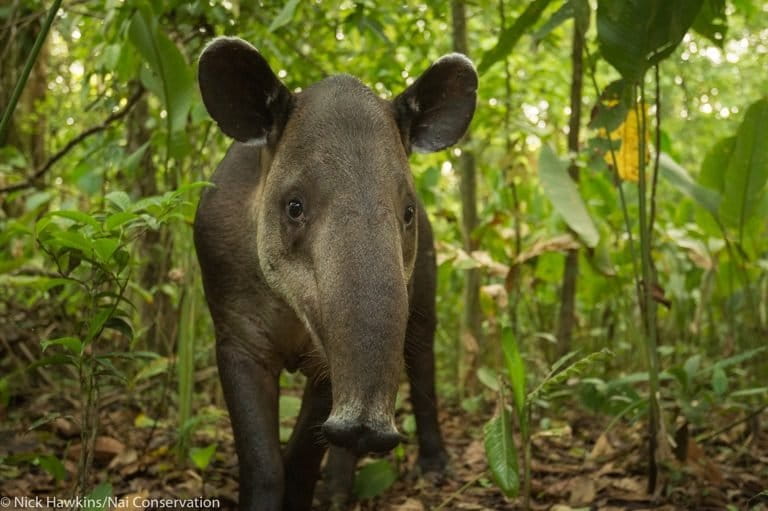- The government of Belize has approved a proposal to protect the Maya Forest Corridor, a key stretch of jungle linking some of the region’s largest wilderness areas.
- Once the corridor is secured, it will create the largest contiguous block of forest in Central America, experts say.
- The Maya Forest Corridor is home to iconic animals like the jaguar; the critically endangered Central American river turtle; the endangered Central American spider monkey or Geoffroy’s spider monkey; and the endangered Baird’s tapir.
- There is, however, a lot of work to be done before the Maya Forest Corridor gains official legal protection, including securing key privately owned patches of forest in the area.
In a boost to jaguars and other iconic wildlife of Central America, the government of Belize has approved a proposal to protect the Maya Forest Corridor, a key stretch of jungle that could help create the largest contiguous block of forest in Central America.
About 20 kilometers (12 miles) long and 7 kilometers (4 miles) wide, the Maya Forest Corridor connects two major protected areas: the Manatee Forest Reserve to the south and the Rio Bravo Conservation and Management Area to the north. These protected areas, in turn, are contiguous with the larger Maya Mountain Block in central Belize and the northern Maya lowland forests, shared by Belize, Guatemala and Mexico. The corridor also includes small protected areas, such as the Monkey Bay Wildlife Sanctuary and the Labouring Creek Jaguar Corridor, which the Belizean government had previously set aside to provide safe passage for jaguars (Panthera onca).
“Together, all these forests comprise the largest contiguous block of forest remaining in Central America, and is the largest block of forest in the neotropics north of the Amazon,” Percival Cho, CEO of Belize’s forestry ministry, told Mongabay.

In addition to jaguars, the Maya Forest Corridor is home to the critically endangered Central American river turtle (Dermatemys mawii), the endangered Central American spider monkey or Geoffroy’s spider monkey (Ateles geoffroyi); and the endangered Baird’s tapir (Tapirus bairdii).
There is, however, a lot of work to be done before the Maya Forest Corridor gains official legal protection. Most of the area earmarked as the Maya Forest Corridor is privately owned, and it’s in these areas that deforestation is rampant because of agricultural development, Cho said.
In fact, more than 65 percent of forest within the corridor has been lost to sugarcane and other agriculture expansion over the past decade, according to a press release by a coalition of organizations assisting the Belizean government in securing the corridor. The coalition includes NGOs such as Global Wildlife Conservation, Panthera, Wildlife Conservation Society (WCS), and World Wildlife Fund, along with the Belize Zoo, Foundation for Wildlife Conservation, Monkey Bay Wildlife Sanctuary and Field School, and the University of Belize and its Environmental Research Institute.
The NGO partners will help with both technical support and with raising the funds needed to secure key privately owned forests, Jeremy Radachowsky, director of the Mesoamerica and Caribbean program at WCS, told Mongabay.
“Fortunately, some of the private forest owners have decided to protect their forest,” Cho added.

The local communities will not be moved for the official designation of the corridor. Rather, steps will be taken to ensure that “large-scale agriculture does not continue to expand into the remaining forests and that local communities benefit from forest-compatible livelihood opportunities,” Radachowsky said.
Once the forests are secured, the coalition will help the government develop a corridor-wide management plan for development and opportunities for communities living in and around the corridor, Radachowsky said, including sustainable tourism, hunting, forestry and agriculture.
“With its declaration of the Maya Forest Corridor as an ‘area of natural significance,’ the government of Belize has signaled that this area must be permanently protected for the good of the climate, wildlife, the people living in the corridor area, and the people of Belize generally,” Radachowsky said. “With global trends of biodiversity loss, deforestation, and forest fragmentation, the Belize government is stepping up for all of humanity by keeping this globally important forest intact.”
